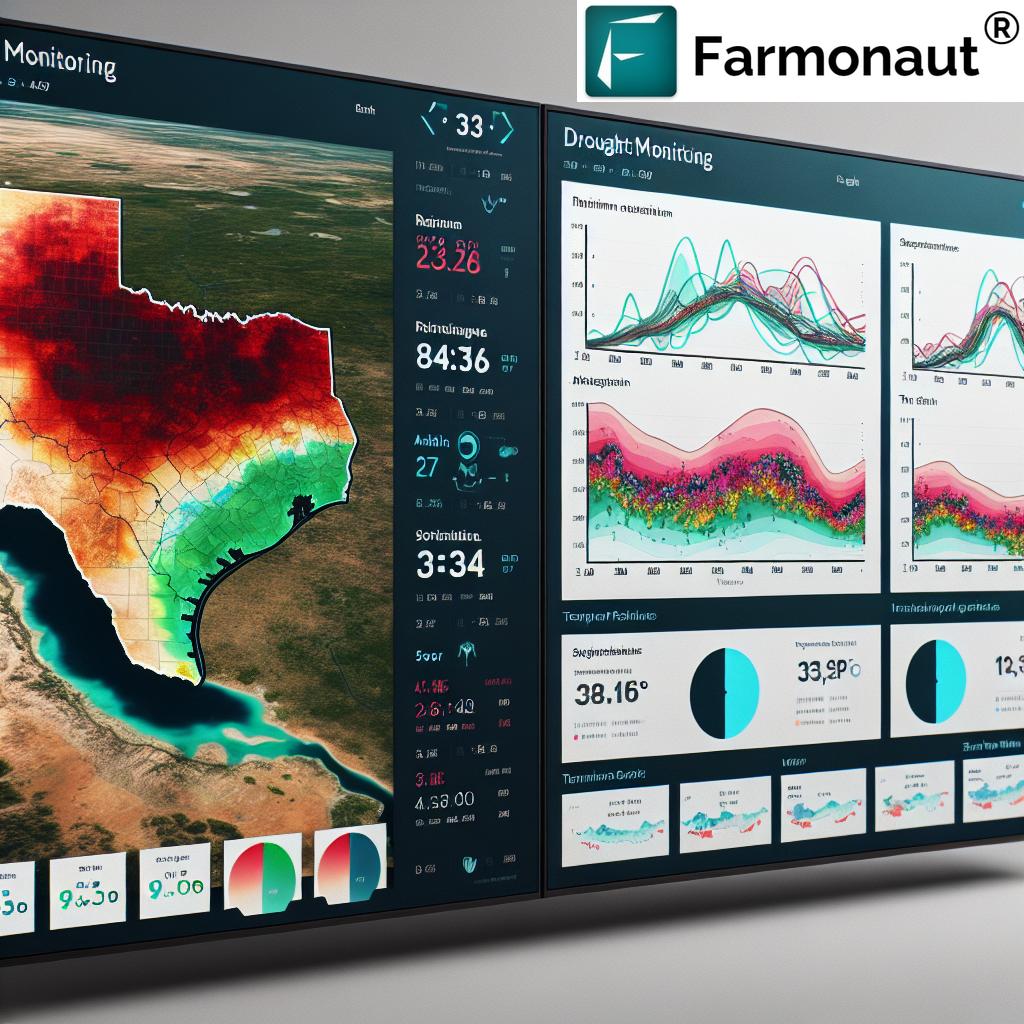What is Citrus Greening? 7 Key Strategies for Florida
Table of Contents
- Citrus Greening Disease: A Comprehensive Overview
- Causal Agents and Transmission of Citrus Greening Bacteria
- Huanglongbing Symptoms and Effects on Citrus Trees
- Global Distribution and Economic Impact of Citrus Greening
- Orange Production Decline in Florida and Brazil
- Citrus Greening Detection Methods
- Key Challenges in Citrus Greening Disease Management
- 7 Key Citrus Disease Management Strategies for Florida
- Comparative Strategies Table
- How Farmonaut Supports Precision Citrus Management
- Future Solutions & Ongoing Research in Citrus Greening Control
- FAQ – Citrus Greening Disease & Control
- Conclusion
Citrus Greening Disease: A Comprehensive Overview
Citrus greening disease, widely identified as huanglongbing (HLB), is a highly destructive bacterial infection affecting citrus trees across the globe. This disease remains a formidable threat to citrus production, economics, and the sustainability of agriculture and forestry sectors. Since its initial emergence, citrus greening has dramatically impacted key citrus-growing regions—most notably Florida in the United States—leading to unprecedented orange production decline and rising juice prices worldwide.
HLB is caused by bacteria of the genus Candidatus Liberibacter, with C. asiaticus as the most prevalent and damaging strain. The disease is primarily spread by insect vectors, such as the Asian citrus psyllid (Diaphorina citri) and African citrus psyllid (Trioza erytreae). Infected trees exhibit striking huanglongbing symptoms like mottled leaves, stunted growth, and misshapen, bitter fruit. Without a cure and given the efficiency of bacterial transmission, citrus greening remains a critical challenge for farmers and citrus industries, especially in Florida and Brazil.
Causal Agents and Transmission of Citrus Greening Bacteria
The causal agent of citrus greening is a group of phloem-limited, Gram-negative bacteria, primarily Candidatus Liberibacter asiaticus. These bacteria are transmitted by two main psyllid vectors:
- Asian citrus psyllid (Diaphorina citri): Most common vector affecting American and Asian citrus regions.
- African citrus psyllid (Trioza erytreae): Responsible for spread in African and some Mediterranean areas.
These insects feed on the sap of citrus plants, acquiring HLB bacteria from infected hosts and transmitting them to healthy trees. The transmission process is highly efficient, resulting in rapid disease spread when vectors are present.
Key characteristics of citrus greening bacteria transmission:
- Bacteria genus: Candidatus Liberibacter (notably C. asiaticus, C. africanus, and C. americanus).
- Primarily transmitted by insects—no seed transmission confirmed.
- Vectors acquire bacteria by feeding on infected plants.
- Bacteria reside in phloem, causing systemic infection in host trees.
Huanglongbing Symptoms and Effects on Citrus Trees
Effective citrus disease management strategies require prompt recognition of HLB symptoms. Infected citrus trees undergo a complex set of physiological and morphological changes as the bacteria disrupt the phloem’s function, impeding nutrient and water transport.
HLB Leaf and Fruit Symptoms
- Asymmetrical blotchy mottling of leaves, a classic sign of disease.
- Yellowing—especially of veins and areas between veins—distinct from typical nutrient deficiency patterns.
- Premature leaf drop, leading to thinned canopies and less photosynthetic capability.
- Misshapen fruits—typically small, lopsided, thick-skinned—remain green at the bottom and deliver a bitter taste rather than the expected sweetness.
- Overall tree stunted growth, twig dieback, and reduced vigor.
- Progressive tree decline and, ultimately, tree death.
The progression of these huanglongbing symptoms leads to reduction in fruit quality, lower orange juice yields, and significant economic loss for growers.
Global Distribution and Economic Impact of Citrus Greening
Citrus greening disease has moved far beyond its origins. First recognized in Asia at the close of the 19th century, HLB now affects over 40 countries, making it a global threat to agriculture, supply chains, and rural livelihoods. The economic impact of citrus greening is colossal, especially in countries whose economies are tightly linked to citrus production and the orange juice sector.
- Florida: Once produced 244 million boxes (1998) of oranges; post-HLB, production plummeted to below 40 million boxes in the last decade and hit a projected 12 million for 2024–2025.
- Brazil: The world’s largest orange producer—output is dropping fast due to both HLB and adverse weather, pushing juice prices higher.
- Other affected regions: China, India, South Africa, and numerous Mediterranean and Latin American countries.
Estimated losses run into the billions of dollars yearly, as the disease affects yield, increases costs, and forces growers out of business. In severe cases, groves are abandoned or converted for other land uses, amplifying the threat to both industry and food security.
Secondary consequences include:
- Loss of rural employment and traditions tied to citrus farming.
- Increase in juice prices for global consumers.
- Threats to biodiversity and increased risk of invasive species.
Key Data Points
- Since 2005, Florida’s orange output dropped by over 95% for certain varieties.
- Brazil faces its lowest orange crop in over 30 years.
- Worldwide, citrus greening altered market dynamics, destabilizing traditional export flows.
Orange Production Decline in Florida and Brazil
The US state of Florida and Brazil—the key citrus and juice supply hubs—are at the epicenter of the crisis.
Florida: From Boom to Crisis
- Pre-HLB (1998): Orange production stood at 244 million boxes.
- Post-HLB: Production fell dramatically each year; as of 2024-2025, it is projected at near 12 million boxes (a catastrophic reduction).
- The orange production decline is directly tied to HLB, compounded by adverse weather, hurricanes, and industry contraction.
- The industry faces lost jobs, abandoned groves, and permanent land conversion.
Brazil: Global Juice Leader Under Threat
- Brazil is the top orange juice exporter by volume.
- 2024 saw the lowest expected output in over three decades due to HLB and dry weather.
- Juice prices soared as a result, affecting international markets.
Both regions exemplify the global impact of citrus greening and the need for scalable, science-based disease management strategies.
Citrus Greening Detection Methods
Timely and reliable identification of citrus greening disease is crucial for management. Traditional detection depends on the visual assessment of leaf mottling or fruit abnormalities. However, early HLB symptoms can mimic nutrient deficiencies, making this process unreliable until advanced stages of disease progression.
Current Detection Approaches
- Visual symptoms: Detects late-stage infection but is not reliable for early management.
- Molecular diagnostics (PCR, qPCR): Accurate detection of Candidatus Liberibacter asiaticus DNA, but requires specialized lab equipment.
- Field test strips: Becoming available for on-site bacterial detection but still in development.
- Remote sensing: Use of satellite or drone-based spectral tools (e.g., NDVI, RGB data) to identify changes in plant health from above. Enables rapid scanning of large fields to flag possible infected zones for ground confirmation.
Advanced detection, especially using platforms like Farmonaut, can support early intervention, limit disease spread, and reduce the costs and time lag associated with laboratory tests.
Key Challenges in Citrus Greening Disease Management
The fight against citrus greening in Florida and other regions faces numerous obstacles:
- No cure exists: Current solutions are focused on vector control, mitigation, and minimizing tree losses.
- Efficient transmission: Insect vectors rapidly spread bacteria, allowing outbreaks even when small populations persist.
- Resistant development in psyllids: Overreliance on insecticides for asian citrus psyllid control selects for resistance.
- Detection difficulties: Visual detection misses early infections; lab diagnostics are slow and expensive at scale.
- Economic constraints: Many farmers lack capital for large-scale, multi-layered management practices.
- Environmental and regulatory change: Many insecticides are banned or restricted. Increasing pressure to adopt sustainable solutions.
- Infected tree removal: Necessary for disease control but creates short-term economic losses and discourages reporting.
These challenges make holistic, innovative, and tech-driven citrus disease management strategies more urgent than ever.
7 Key Citrus Disease Management Strategies for Florida
Combating the threat of citrus greening requires an integrated approach. Here are the 7 most effective citrus disease management strategies, each focused on a core aspect of infection control, mitigation, or industry adaptation—particularly suited for affected regions like Florida:
-
Asian Citrus Psyllid Control
- Regular monitoring and targeted spraying using approved insecticides.
- Deployment of biological control agents (e.g., parasitoid wasps) to reduce psyllid populations.
- Monitoring for insecticide resistance development.
-
Removal of Infected Trees
- Immediate identification and eradication of infected trees to prevent further bacterial transmission among healthy trees.
- Quarantine zones and strict hygiene practices.
-
Cultural Practices and Grove Sanitation
- Pruning, weed control, and removal of volunteer citrus to disrupt psyllid life cycles.
- Cleaning of equipment and vehicles to avoid spreading bacteria.
-
Nutrient Management
- Optimized fertilization to bolster tree health and moderate the effects of HLB.
- Frequent application of micronutrients (particularly zinc, manganese, magnesium) and supplemental foliar sprays.
-
Use of Genetically Modified Citrus Trees & Resistant Varieties
- Encouraging adoption of disease-tolerant or genetically modified citrus trees capable of resisting HLB bacteria.
- Ongoing research for tree lines expressing antibacterial proteins or enhanced natural immunity.
-
Integrated Pest Management (IPM)
- Combining chemical and biological controls, along with satellite-based monitoring for efficient resource allocation.
- Promoting biodiversity within groves to enhance natural enemy presence.
-
Adoption of Emerging Technologies
- Utilization of drone and satellite imagery systems (like our Farmonaut platform) for real-time crop health monitoring and early HLB detection.
- Leveraging AI-based crop monitoring and blockchain traceability for better resource use, disease tracking, and transparent supply chains.
- Automated decision support for irrigation, nutrition, and pest thresholds.
Each of these management strategies has distinct advantages and implementation requirements. Importantly, layered use is more effective than relying on any single tactic, especially in high-value citrus production areas like Florida.
Comparative Strategies Table
To assist growers, policymakers, and agronomists, here is an actionable, side-by-side comparison of key management options for HLB in terms of effectiveness, cost, and implementation difficulty. This table aids in decision making for sustainable citrus disease management in Florida and globally.
| Strategy | Estimated Effectiveness (%) | Implementation Difficulty | Estimated Cost ($/acre) |
|---|---|---|---|
| Asian Citrus Psyllid Control | 65-80 | Medium-High | 200-350 |
| Removal of Infected Trees | 70-90 (with rapid detection) | Medium | 150-250 |
| Cultural Practices & Grove Sanitation | 50-65 | Low-Medium | 80-120 |
| Nutrient Management | 40-60 (supplemental) | Low-Medium | 60-100 |
| Genetically Modified Citrus Trees / Resistant Varieties | 75-95 (future potential) | High (current rollout) | 400-600 (initial) |
| Integrated Pest Management (IPM) | 65-85 | Medium-High | 250-400 |
| Adoption of Emerging Technologies (Satellite/AI) | 60-75 | Medium | 90-200 |
How Farmonaut Supports Precision Citrus Management
At Farmonaut, our mission is to make precision agriculture affordable and accessible. The ongoing citrus greening crisis calls for a robust combination of resources, monitoring, and advanced analytics—precisely what our technology delivers:
- Satellite-Based Crop Health Monitoring: We provide real-time NDVI and multispectral analyses, helping growers detect changes in tree health and flag early symptoms of citrus greening disease at scale.
- AI-Based Advisory (Jeevn AI): Our platform delivers personalized, actionable recommendations, integrating weather forecasts, pest risks, and disease detection insights to maximize productivity.
- Blockchain Traceability: We enable secure, transparent tracing for citrus supply chains—vital for consumers and industry confidence. Learn more about blockchain-based traceability →
- Resource/Fleet Management: Our tools optimize farm operations, vehicle use, and input allocation to enhance economic outcomes and reduce costs. Explore fleet management solutions →
- Carbon Footprinting: We help farmers track and reduce their environmental impact while meeting sustainability targets. See our carbon footprinting service →
- Crop Loan & Insurance Verification: By providing satellite-verifiable data, we help farmers secure loans and insurance. Learn about our crop loan support →
Farmonaut services are available on Android, iOS, web app, and via robust APIs. Integrate with our satellite API or view developer docs for seamless agri-data access.
By leveraging satellite and AI-driven decision-support tools, growers can identify HLB symptoms early, optimize interventions, and measure the effectiveness of management strategies—all while reducing overall farm costs and minimizing environmental risks.
Ready to experience next-level citrus disease management? Get started with Farmonaut today.
Future Solutions & Ongoing Research in Citrus Greening Control
The future of citrus greening disease management hinges on scientific innovation and community resilience. Major avenues of research and emerging solutions include:
- Development of Genetically Modified Citrus Trees: Researchers are making strides with citrus lines that express antibacterial proteins toxic to asian citrus psyllid control or resistant to HLB bacteria. While not yet widely available due to regulatory hurdles, these genetically modified citrus trees show high promise for the future.
- Microbiome Engineering: Exploring the beneficial bacteria associated with healthy citrus roots as a way to boost tree immunity and outcompete HLB pathogens.
- Novel Insecticide Modes: New classes of environmentally sensitive compounds and biologicals that target the vectors without causing resistance or harming non-target organisms.
- Automated Detection & Decision Support: Integration of satellite imagery, drone data, and machine learning (Farmonaut example) can automate disease detection at the block or tree level, minimize false positives, and optimize resource allocation.
As these research and development routes mature, they promise greater sustainability, lower costs, and more resilient global citrus production systems.
FAQ – Citrus Greening Disease & Control
What is citrus greening disease (HLB)?
Also known as Huanglongbing, it is a devastating citrus disease caused by Candidatus Liberibacter bacteria and spread by psyllid insect vectors, leading to tree decline, fruit quality loss, and death.
What are the key symptoms of HLB?
Typical symptoms include blotchy mottled leaves, yellowing, stunted growth, twig dieback, premature leaf drop, small misshapen fruits with green bottom, and bitter taste.
Why is HLB so hard to control?
The bacteria are spread efficiently by insect vectors and can remain undetected in trees for months, making control and removal challenging. There is currently no cure.
What regions are most affected by citrus greening disease?
Florida (USA) and Brazil are the hardest hit, but over 40 countries across Asia, Africa, Latin America, and the Mediterranean are affected, threatening global orange production.
What is the economic impact of citrus greening?
HLB has led to a >95% decline in Florida’s orange production and threatens $ billions globally in lost fruit, juice, jobs, and rural economic activity.
How can Farmonaut help with citrus greening management?
Our satellite-based crop and pest monitoring, AI advisory, and blockchain traceability tools offer enhanced detection, efficient intervention, and transparent reporting for effective, affordable HLB management.
Are genetically modified citrus trees available?
Several resistant or transgenic lines are under testing, but broad commercial release awaits further regulatory approval and field validation.
Can psyllid populations develop resistance to insecticides?
Yes, repeated and uncoordinated spraying can accelerate resistance development. Integrated approaches and biological controls are key.
Is citrus greening disease transmittable by seed?
No, current research confirms HLB bacteria are not spread through seed, but rather by sap-feeding psyllid vectors.
Conclusion
Citrus greening disease stands as one of the most significant and complex agricultural threats of the 21st century. Its rapid bacterial transmission by psyllid vectors, severe tree decline effects, and staggering economic impact have forever changed the face of global citrus production—felt most acutely in Florida and Brazil.
Yet, there is hope: informed growers adopting a multifaceted defense—psyllid control, cultural hygiene, resistant genetics, smart nutrient use, and advanced agri-technologies—can sustainably manage HLB‘s progression. Precision tools, AI-driven guidance, and transparent data management, as offered by Farmonaut, empower farmers and industry leaders to make better decisions, saving trees, profits, and the future of the citrus industry.
Ongoing research, from gene editing to microbiome science, combined with strategically layered management and global knowledge sharing, will ensure our citrus groves thrive for generations. Sustained, collaborative effort—with the right tools—holds the key to outpacing this formidable citrus disease challenge.

![citrus greening disease Florida management [Citrus Greening Keyword Image 1]](https://farmonaut.com/wp-content/uploads/2025/06/What-is-Citrus-Greening-7-Key-Strategies-for-Florida_1.jpg)
![what is citrus greening HLB in citrus trees [Citrus Greening Keyword Image 2]](https://farmonaut.com/wp-content/uploads/2025/06/What-is-Citrus-Greening-7-Key-Strategies-for-Florida_2.jpg)













